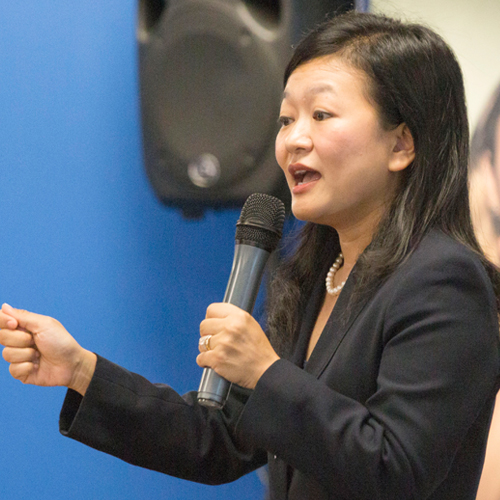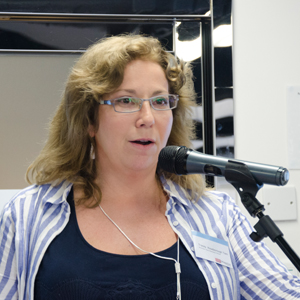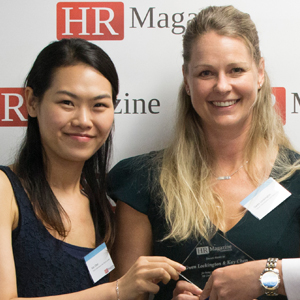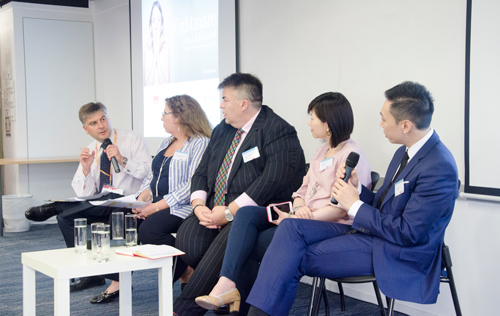
L&D, where did it all go wrong? HR tackles the tough questions at its Summer 2017 conference. Asking some of HR’s finest, we get down to the nitty-gritty of where L&D took a nasty turn, and how organisations are tackling those challenges.
Calculated risk

Jenny Pong, Group Director of HR, JTH Group
HR frequently needs to answer abstract and open-ended questions. As Jenny Pong, Group Director of HR, JTH Group stated, “There were two questions posed to our team at JTH: how can we connect our people better? And how can we make people more innovative?” The HR department put their heads together and came up with a creative solution to increase both connectivity and innovation.
While most companies achieve connectivity through developing an intranet, doing so can be expensive and time-consuming. Besides, technological advancement has produced a newer and more interesting way of connecting people: social media. As for innovation, the team decided that the fastest route to innovation was to lead by example. HR could have brought in traditional trainers to conduct courses and L&D programmes focused on innovation, but, as Pong declared, “Actions speak louder than words. Rather than just using buzzwords, we needed to act as innovators ourselves.”
The HR team developed a company-wide social media app. Its most innovative component is the VR360 glasses which enable colleagues to visualise the organisation’s global community. The app also promotes connectivity through features like sharing happy moments and giving colleagues public recognition for a job well done. Employees are encouraged to share new ideas with each other, as well as like and comment on each other’s posts.
Rather than worrying about the challenges of taking such a game-changing step, Pong encouraged the trying of new things. For example, before releasing the platform, management worried about issues like how to inspire good etiquette and polite exchanges. But the team took a ‘wait and see’ approach and found that negativity on the app was really a non-issue. Pong emphasised, “Sometimes you just need to get something out quickly, learn from it, and then see how you can enhance it. If you want to inspire your employees to take more risks without fear of failure, HR must be leaders in that.”
Unlearn to learn

Tracey Roseborough Tam, Executive Director, Head of Learning & Development, APAC, Michigan Ross Business Schoo
There has never been a more difficult nor a more exciting time to be in learning and development. So says Tracey Roseborough Tam, Executive Director, Head of Learning & Development APAC, Michigan Ross Business School who explained, “We as a function have reached a tipping point where we must each decide if we will be brave enough to challenge the orthodoxy of what we as a profession have been doing for the last few decades. Are we ready to be open
to questioning what we know about leadership development, about learning and what it means to lead in today’s volatile, uncertain, complex and ambiguous (VUCA) world?”
Much of what is taught today in corporate programmes is often decades old and has too often been recycled from company to company to company... These traditional frameworks can be important, but they are not nearly enough to prepare leaders to survive and thrive in today’s drastically different and complex world of work.
Roseborough argues, “We need to explore future skills, systems, design and critical thinking as well as decision making for VUCA environments. Positive leadership, mindfulness and mindsets for employee sustainability will likely be the new normal going forward.”
L&D might also want to rethink the when and how of learning by exploring flipped classrooms, M learning, building learning back in work and exploring how to leverage peer learning within your organizations.
Key to L&D's future as HR leaders is their ability to learn a new language: the language of business. Roseborough mentioned, “I am increasingly seeing CHRO roles going to people without a HR background because there are not enough senior HR talent with the level of business understanding that is now increasingly being required by the business. Some companies are deciding that it is easier to teach a business leader HR than it is to teach business to a HR leader.
HR as a profession needs to adapt to the shifting requirements. In order for us to move into the next stage of evolution they need to think of themselves as business leaders first who happen to be responsible for the HR or L&D function and develop themselves accordingly. Roseborough concludes, “They say every great journey begins with a single step so carpe diem (seize the day) my friends!”
Embracing the 70-20-10 rule

Bessie Chong, Director, Group Training and Talent Management, Esquel Group
Bessie Chong, Director, Group Training and Talent Management, Esquel Group shared how Esquel use the ‘70-20-10 rule’ (70% on the job training, 20% mentoring and coaching and 10% formal learning) to drive people initiatives and develop talent progressively. Esquel aspires to make a difference by setting new benchmarks and improve efficiency by integrating talent with technology. Chong offered, “Our people strategy is to groom people from within so we must use different training and development approaches to help them fulfil their potential.”
Esquel University provides talent with structured training by offering tailored programmes in the form of a learning portal to facilitate personal growth. Progress is transparent so talent can take ownership of their learning and monitor their progress.
A blended learning model is then adopted according to employees learning interests and needs. To get employees on board, Esquel have rolled out the ‘a date with HR campaign’ where line managers have a ‘date’ with HR managers to aid the building of long lasting relationships with employees. Chong explained, “A series of dating dialogues provide HR managers with the opportunity to share their thoughts and help line managers and employees understand more about Esquel’s HR and people-related initiatives and the importance of personal growth.”
Chong believes that buy-in from line-managers helps to champion the initiative and foster a peer learning mind set which is integral to the initiative’s success. Therefore a ‘date’ with HR is more about fostering a change in mind set rather than initially focusing on a changing skill sets. Chong concluded, “Learning culture takes time to build—HR needs to build critical mass through communication. Talent must know why training is necessary and HR must help them identify areas for improvement in order to boost performance and enhance their careers.”
Training through WeChat

Joanna Lee, Group Head of Human Resources, Bauhinia Coatings Group
In mainland China, WeChat is an extremely popular social media app. As Joanna Lee, Group Head of Human Resources, Bauhinia Coatings Group, pointed out, “Everyone is attached to their mobile in China, and particularly WeChat. Therefore there is a huge mobile learning potential.” As her organisation is based across mainland China, using WeChat for both formal and informal training methods has been a highly effective way of increasing uptake.
Some of the official training offered through WeChat includes modules such as Emotional Intelligence (EI) training. Lee clarified, “EI is a highly important skill for managers. You must be able to effectively set the tone for your employees.” By rolling it out on the app, managers are exposed to the same training, regardless of location. The app is also used as an official channel of communication, with groups for different departments such as HR.
As for informal trainings, there are a range of materials available that employees can choose to view at any time. Lee explained, “Employees must be able to check out what they are interested in, when they are interested. This helps them ease their way into changes.” Employees can scroll down a list of trainings ranging from about a minute in length to 15 minutes or more, viewing whatever they would like. They can even earn red pockets for participating in enough of these unofficial trainings. In addition, there are informal groups to increase staff connectivity, such as a group to share interesting reading materials.
Despite the utility of WeChat, there are also some challenges to using it as an official channel. Lee voiced, “One concern right from the start is getting everyone to use their official names rather than fake usernames. From there, we need to make sure communication is kept formal and simple enough so that different groups can all understand each other.” Another challenge is keeping the chatter down, such as not having twenty employees respond with a thumbs-up sign to a manager’s announcement. Lee added, “Teaching people how to use WeChat appropriately in an official capacity is an important step in this process, and ensures staff are learning and communicating effectively.”
HR problem-solver

Gayle Antony, General Manager, Global Human Resources, INFINITI Motor Company Ltd.
HR is under increasing pressures internally and externally. The business is looking at HR to solve all its people problems, thinking they are the solution. Gayle Antony, General Manager, Global Human Resources, INFINITI Motor Company Ltd. said however, “HR is the not the solution itself, but rather the guide to finding one.” L&D alone is not the solution, but must work with the board to deliver strategic, not transactional change.
Antony emphasised, “At this point we have the power to decide what role we want play. We can sit back and wait for the business to come to us. Or we can go to the business.” HR should in turn approach the organisation with a broader perspective. Do not just go on what the business has told you needs addressing. Often there is a root cause that can be identified, and when addressed can have exponential positive outcomes. It is down to HR though to take the initiative and discover that. She cited a case regarding enhanced fuel economy for vehicles she experienced. Staff came to HR requesting training to better understand fuel economy and efficiency targets were not being met. After investigation, the cause of the problem was however not a lack of technical understanding, but rather independent teams not talking to each other, thus inadvertently undermining each other and affecting overall business goals.
Furthermore, Antony discussed how L&D should be broken down into 70% on the job training, 20% mentoring and coaching and 10% formal learning. She noted, “You need a variety of solutions that aren't just training based. L&D is focusing all its time on the 10% of formal learning.” This leaves the other 90% often ignored or left as an afterthought. The balance is clearly misaligned and the time balance must be reinvested accordingly.” HR cannot make the changes alone though. The business itself needs to own change.
Employee experiences count

Athena Ngai, Senior HR Manager, Sony Corporation of Hong Kong
Athena Ngai, Senior HR Manager, Sony Corporation of Hong Kong described how Sony Corporation continuously strives to add the ‘wow’ factor as the inspiration behind their training programmes. Ngai explained, “We want to cultivate diversified learning and career development opportunities and engagement through inspiration.”
Enriching on-board experiences for new hires is a key stage in developing talent at Sony and it is important that they are provided with the necessary support to do so. “We must instil our company values and spirit at the start of the development journey. We provide a series of orientation programmes including role clarification, corporate values and career management to help talent integrate quickly.” It is important to Sony Corporation that talent know how they can be supported in their role to enable them to become architects of their own careers. A career website is made available to provide talent with the practical tools to enhance certain competencies combined with career coaching and global opportunities to gain exposure in different cultures and working environments.
After the induction process is complete, young talent receive on-going development. Ngai offered, “The LEAP curriculum helps to strengthen leadership perspective and skills for young talent and enables them to apply learning in the workplace.” Managers play an important role in promoting personal growth and advocating training programmes. Participants are invited to share their experiences about the training they received which helps to further enhance their engagement with the training process.
Post training assignments also offer up interesting insights into what talent gained from training as they get the chance to undertake challenging assignments which can open up exciting new opportunities for them. Ngai concluded, “We aim to engage young talent by not just focusing on knowledge. We care about their well-being and it is important to equip them with the tools to help retain composure in stressful situations.”
Turning instructors into facilitators

Kay Chen, Human Resources Manager, APAC, Turner International Asia Pacific Limited
Gwen Lockington, Executive Director, HR, APAC, Turner International Asia Pacific Limited
The only thing that stays steady during the years is the need for L&D. L&D is in a constant state of flux, thinks Gwen Lockington, Executive Director, HR, APAC, Turner Broadcasting System Asia Pacific Limited who commented, “L&D is highly driven by changes in consumer desires and needs. As well as an explosion in different platforms for delivering it, the rate of change is accelerating.” Thorough assessment and analysis need to be conducted before committing to change. This implies HR must ask themselves some questions before taking next steps:
- What is critical for the future?
- Who can be retrained?
- What roles need to be hired externally?
Fleshing out future goals is vital to keeping HR relevant. Predicting the future for L&D can be a daunting task, however, HR are a resilient bunch and will take any L&D challenges in their stride and come out the other side.
Discussing how L&D has morphed, Lockington described how things have changed, “Our organisation has moved from a structure of using instructors to one where learning is instead guided by facilitators.” This changes the learning dynamic entirely. As opposed to the previous cascade of knowledge, it has manifested into one that is more collaborative. Learning is guided by the facilitator who takes on the role of an advisor, allowing staff to direct their own learning more and come to their own conclusions.
As companies move towards utilising and making the bulk of training mobile and on-demand, Turner Broadcasting are somewhat shunning the trend. Learning is concentrated into two weeks annually which occurs company wide, throughout the globe. Kay Chen, Human Resources Manager, APAC, Turner Broadcasting System Asia Pacific Limited explained, “The training takes a holistic approach. Rather than single skills, it examines how we act and interact, and how we learn together.” Focusing on culture, rather than just skills, these core two weeks of training yield exceptional results for the company as a whole.
Measuring ROI and business impact at the end should not be forgotten. Programmes must have been relevant to the CEO’s vision, and that overall the mindset and culture has seen a boost. Measuring holistically is much more likely to give a rounder outlook of the company. As Chen iterated, “Our annual culture survey also measures the volume and quality of innovative ideas which can give further insight into the development of an organisation.”
Panel discussion
The first question asked of the panel was to talk about the biggest L&D ‘nightmare’ (or, to put it more positively, ‘challenge’) they had ever encountered. Tracey Roseborough Tam, Executive Director, Head of Learning & Development APAC, Michigan Ross Business School said, “I arrived in Malaysia for a week with the entire senior country leadership team only to find them basically in a cold war with each other. I knew it was pointless to continue with the scheduled leadership program and offered them the opportunity to spend our time working through their challenges in order to come together as one team. It was not an easy start. I just facilitated and they did the heavy lifting work. Thankfully, they all left hugging each other. What a journey!
Glenn Smith, Learning and Development Manager, Asia, The Adecco Group, also related an interesting story, “I was once asked if I could train an employee to stop burping! Of course, something like that comes down to an issue of manager to employee communication, which can in fact be addressed.”

Moderator:
Paul Arkwright, Editor-in-Chief, HR Magazine
The panel from left to right:
Tracey Roseborough Tam, Executive Director, Head of Learning & Development APAC, Michigan Ross Business School; Glenn Smith, Learning & Development Manager, APAC, Adecco Group; Femi Oei, HR Manager, JTH Group; Steven Ng, Head of Learning & Development, Baker McKenzie
Secondly, the panel talked about how to identify employees’ needs. Femi Oei, HR Manager, JTH Group commented, “Enabling your middle management is the most important. Specifically, middle management needs to be trained on handling challenging staff.” Oei explained that most middle managers are excellent at handling employees who are already good, but benefit from training for how to motivate weaker employees on the team. In addition, Roseborough Tam suggested, “Sitting in on business meetings for other departments can be a big help in determining business challenges and training needs in different areas.”
When asked about catering to Millennials, the panel reiterated themes such as gamification and utilising technology to increase engagement. However, Steven Ng, Head of Learning and Development, Baker McKenzie shared an alternative approach, “Law firms do not have the same scalability as an international business and therefore do not always focus on technological innovation. Instead, we focus heavily on a personal approach with lots of one-to-one mentoring. Millennial employees actually really enjoy this aspect.”
Finally, the panel was asked how to measure training effectiveness, particularly for short-term interventions like micro-learning. Smith established, “Of course it is important to measure KPIs and check your targets. More importantly, after the training ends the boss needs to know what behavioural changes they are looking for and keep an eye on whether employees actually adapt those changes.” Ng ended on a philosophical note, “Do you really need to measure everything? The value of certain interventions, such as mentoring, is difficult to measure quantitatively. It is really more about an employee’s long-term, overall well-being.”




